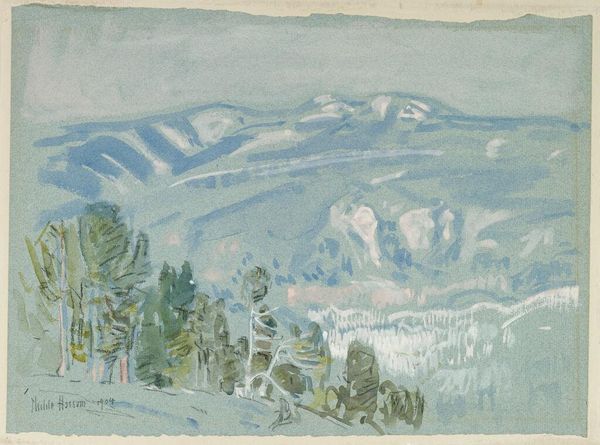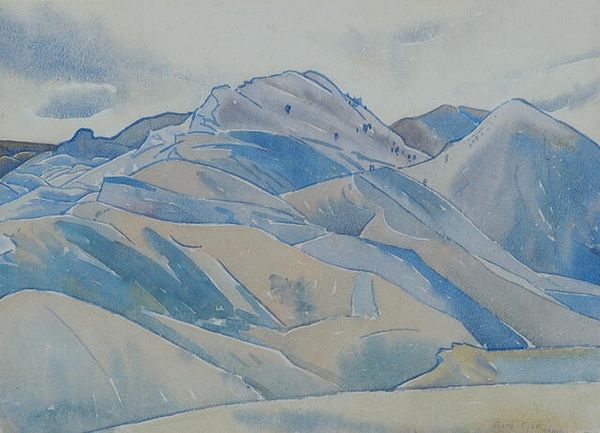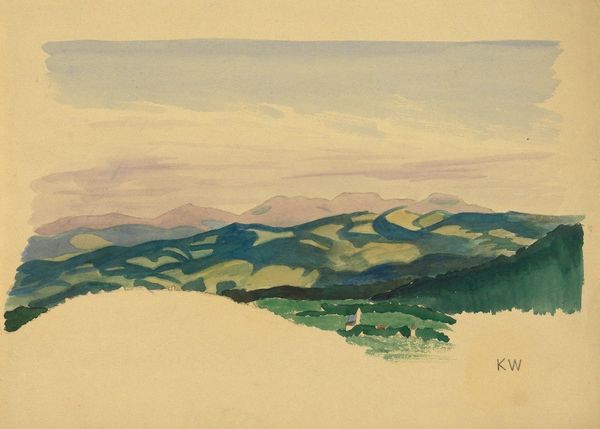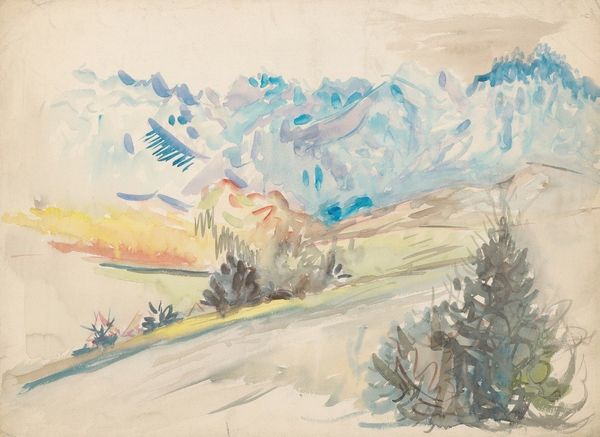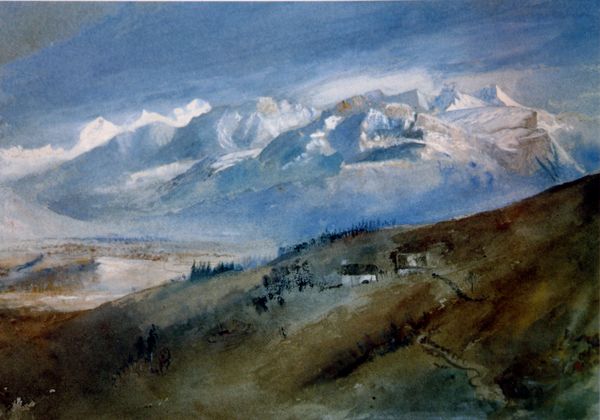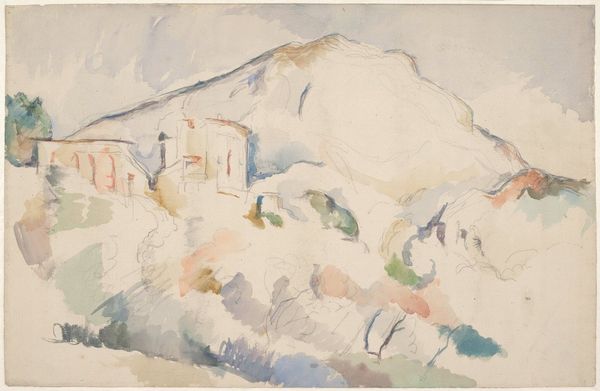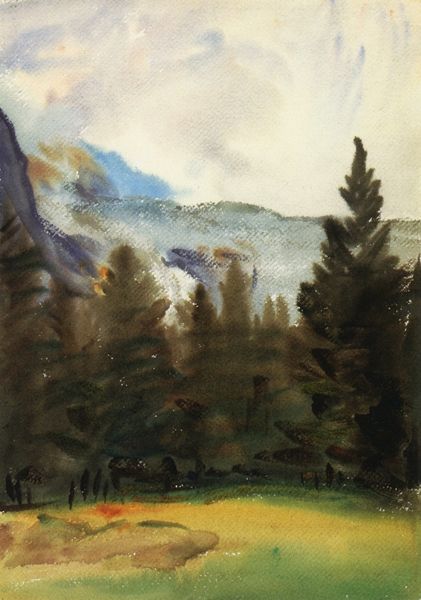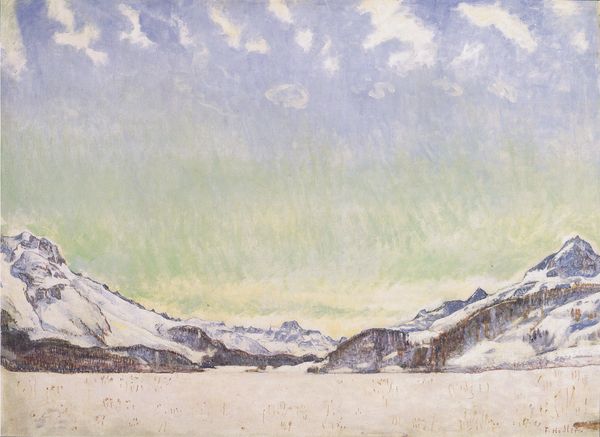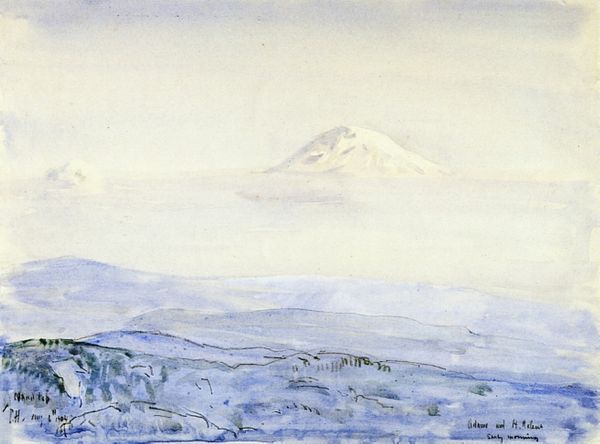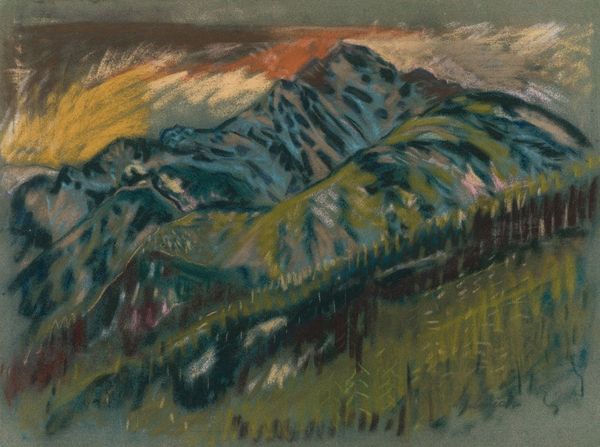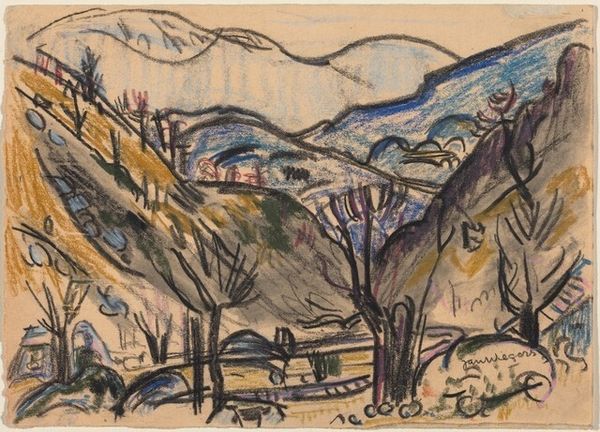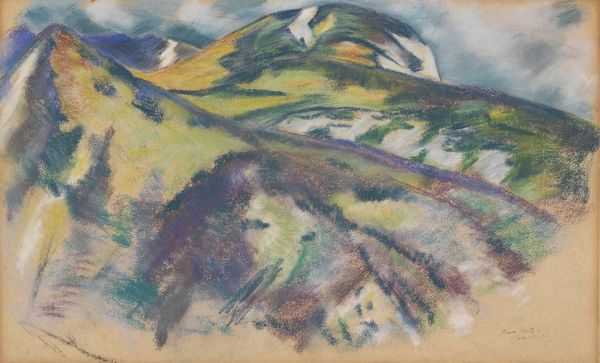
Copyright: Public domain
Curator: Welcome. Before us, we have Childe Hassam's "Looking towards Mount Adams from Mount Hood," painted in 1904, rendered in watercolor. Editor: Immediately, I'm struck by the subdued palette. The washes of blues and greens create an ethereal, almost dreamlike quality. It's quite serene. Curator: Hassam, deeply influenced by Impressionism and working en plein-air, was particularly drawn to capturing fleeting moments and atmospheric conditions. This piece, in its portrayal of the Oregon landscape, speaks to ideas of manifest destiny and the complex relationship between westward expansion and its impact on Indigenous populations and the land itself. How does the symbolism of the mountain contribute? Editor: Mountains, universally, represent transcendence, aspiration. They are meeting points between earth and sky, a place of revelation. I'm interested by how Adams and Hood seem almost to dissolve into the misty atmosphere. The way the individual strokes are blended suggest not only physical distance but also a kind of…blurring of reality. Is this an idealised view or an acknowledgement that all views are in some ways constructed? Curator: Certainly, it pushes back against more conventional, heroic landscapes popular at the time. I find myself thinking about Frederick Jackson Turner’s "Frontier Thesis" – that formative, yet highly problematic theory arguing that American identity was forged in the crucible of westward expansion and by subduing what they viewed as wilderness. I can’t help but examine how this perspective affected land rights, resource extraction and exploitation. The romantic gaze overlooks this problematic narrative. Editor: Indeed, if we peel back the surface of this seemingly idyllic landscape, questions of dispossession arise. The subtle blues and greens carry with them a certain melancholic tone, reminding me that every symbol also embodies something lost. Does the very act of "looking" imply a kind of appropriation, or ownership? Curator: That's a potent observation. Art always mirrors its societal values. And even beauty here raises a critical, contemporary perspective. Editor: Looking at Hassam’s watercolor now, beyond just its aesthetics, is powerful when we allow for its potential critical dialogue about America's historical amnesia. Curator: Exactly, and Hassam’s impressionistic lens challenges us to be sensitive to those untold stories that resonate even in scenic renderings.
Comments
No comments
Be the first to comment and join the conversation on the ultimate creative platform.
